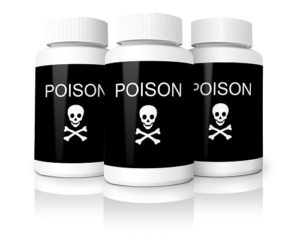 Like the plot of a movie…
Like the plot of a movie…
Warfarin has been used as a medication for more than 60 years. The discovery of Warfarin is interesting and sounds a bit like the plot of a movie; it includes a president, dead cattle, an attempted suicide and rat poison. Like many scientific discoveries of the last century it involved some serendipity, good fortune, the correct circumstances and the determination of a few individuals.
- Part 1 of the history of warfarin was about the discovery of Haemorrhagic Cattle Disease due to spoiled sweet clover,
- Part 2 about a desperate farmer and a churn of blood-that-would-not-clot
- Part 3 about the discovery and use of dicoumarol
and today - Part 4 about rat poison
 In a Sanatorium vegetating like a topped carrot
In a Sanatorium vegetating like a topped carrot
In September 1945 Karl Link took a break from research, as he said in his own words “I was fed up with laboratory work”. He went away on a canoeing holiday with his family. On this trip he was caught in a rainstorm and got soaked and exhausted and came down with pleurisy. Link had a history of tuberculosis as a student and it was thought that this had reactivated. He spent 2 months in Wisconsin General Hospital and was then sent to Lakeview Sanatorium. Link said, “Here I was supposed to vegetate like a topped carrot”, but instead he read and studied his earlier research notes. Link was in the sanatorium for 6 months and took nothing stronger than, “cod liver oil and 3 bottles of beer a day.”
 … reading about rat poison
… reading about rat poison
Link clearly read a rather eclectic selection of books including, The history of rodent control from ancient to modern times. It was at this time that Link considered that it may be possible to produce a rat poison from the chemicals he had synthesised.
Link’s team confirmed the structure of Dicoumarol in 1940, but over the next 2 years the biochemists he was working with made over 100 related chemicals with slight modifications in the sidechains of the molecule. Link did not have time to test the efficacy of all these new chemicals as he had to do tests on animals over several days to assess their anticoagulant effects. However, during his period of convalescence he was able to review the data his team had collected about the modified forms of Dicoumarol. At the time his laboratory work was practically at a standstill as his students were largely away at the war, but after the war he was able to restart further research.

Naming Warfarin
In 1946, L D Scheel, one of Link’s researchers, was given the task of checking the anticoagulant activity of the modifications of dicoumarol numbered from 40 to 65. As well as using rabbits for the experiments, Scheel also used rats, mice and dogs. He found that compounds number 42 and 63 were far more potent than the other forms of the molecule particularly in rats and mice. Previously Link had tried using dicoumarol as a rat poison but it was not potent enough as the rats had plenty of vitamin k in the grain and green plant material they ate to reverse the effects, compound 42 however was much more effective.
Early in 1948 Link proposed that WARF42 should be used as a rodenticide. This proposal shocked his lab staff and they thought he “had gone off the deep end this time”. However the general manager of the Research Foundation, Ward Ross, thought it was a great idea and helped to get the product to market. Link came up with the name Warfarin from the Wisconsin Alumni Research Foundation and added the “arin” from coumarin.
 Warfarin became the best selling rat poison in America and similar chemicals are still used in most mouse and rat poisons used around the world.
Warfarin became the best selling rat poison in America and similar chemicals are still used in most mouse and rat poisons used around the world.
Warfarin as a rat poison has a fantastic safety record, there are no reported cases of human death from rat poison in the US, although over 140 million pounds of rat bait have been sold.
How many people have told you you’re “taking rat poison” once they hear you’re on warfarin?

Leave a Reply